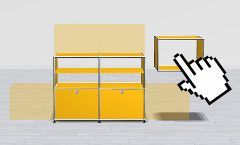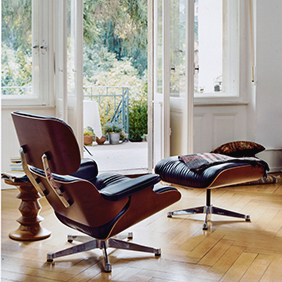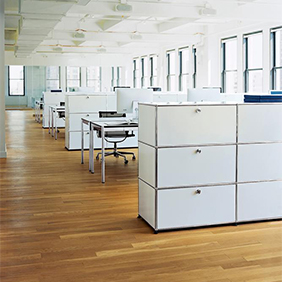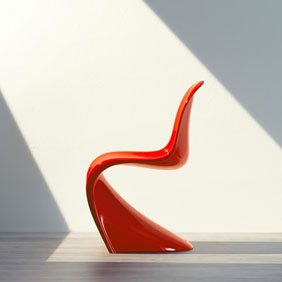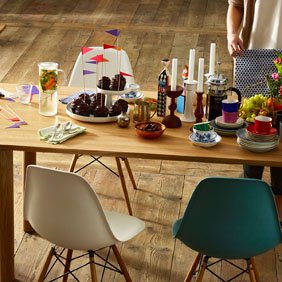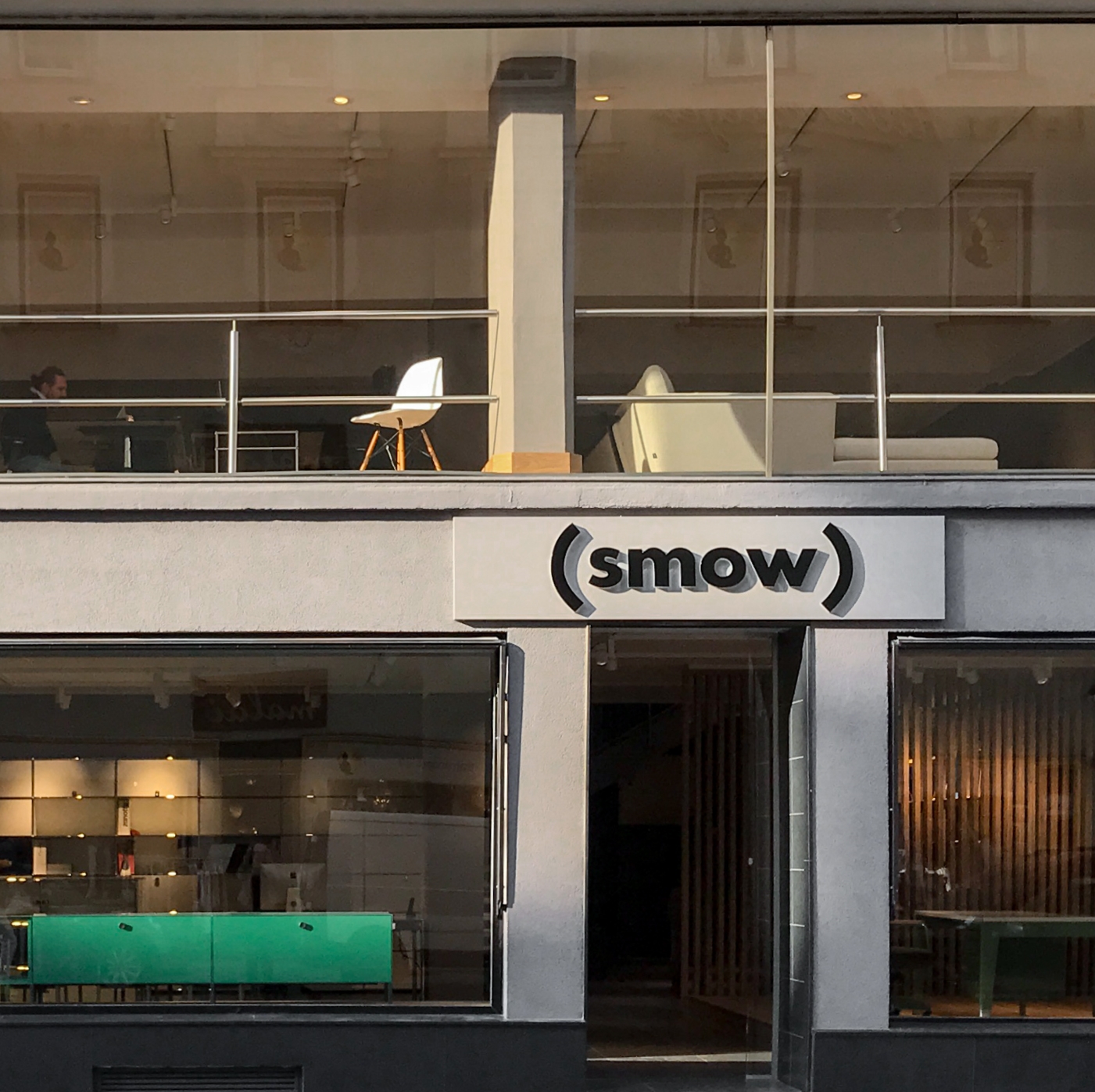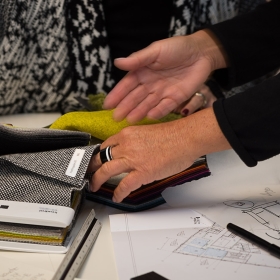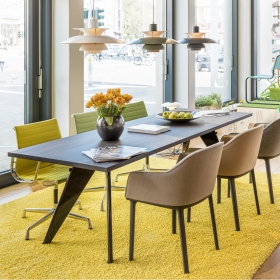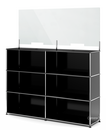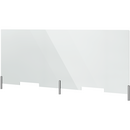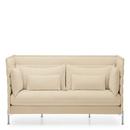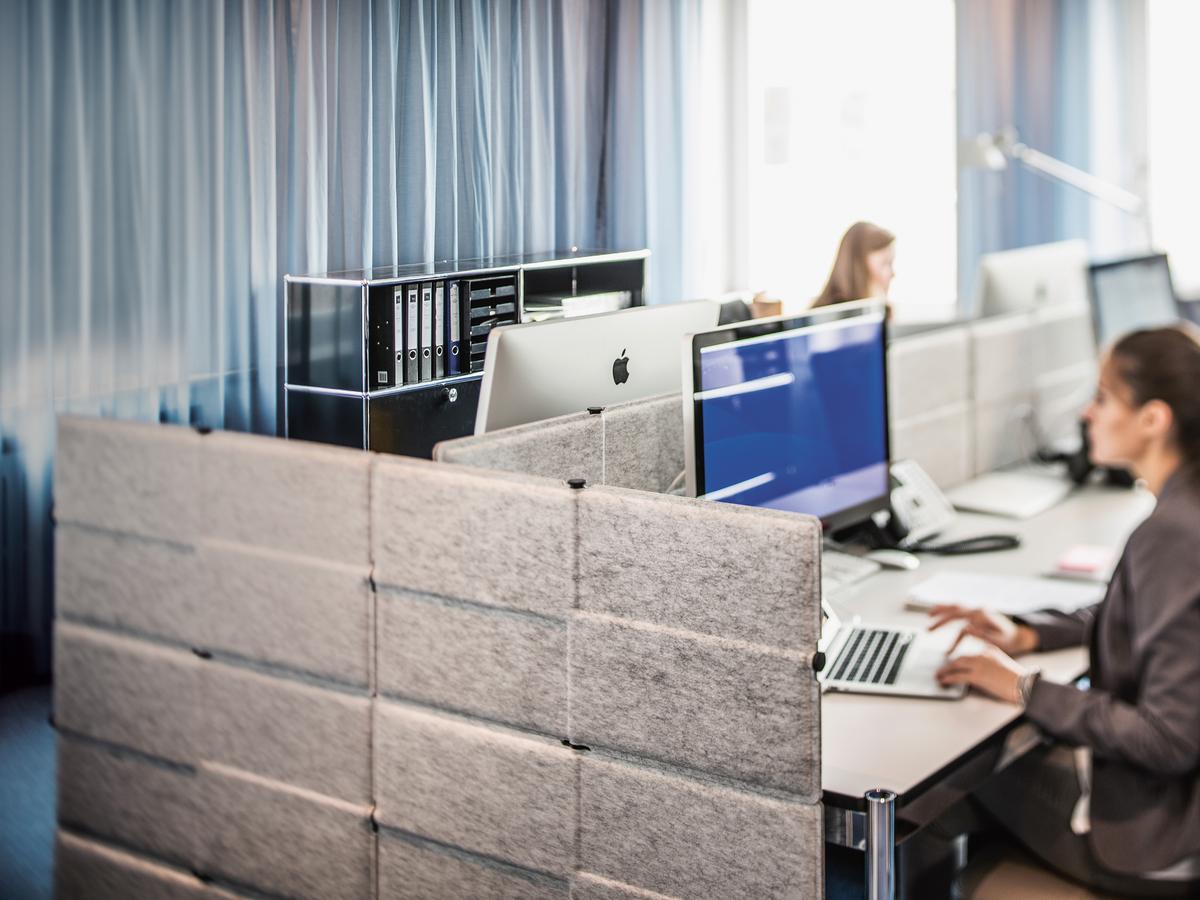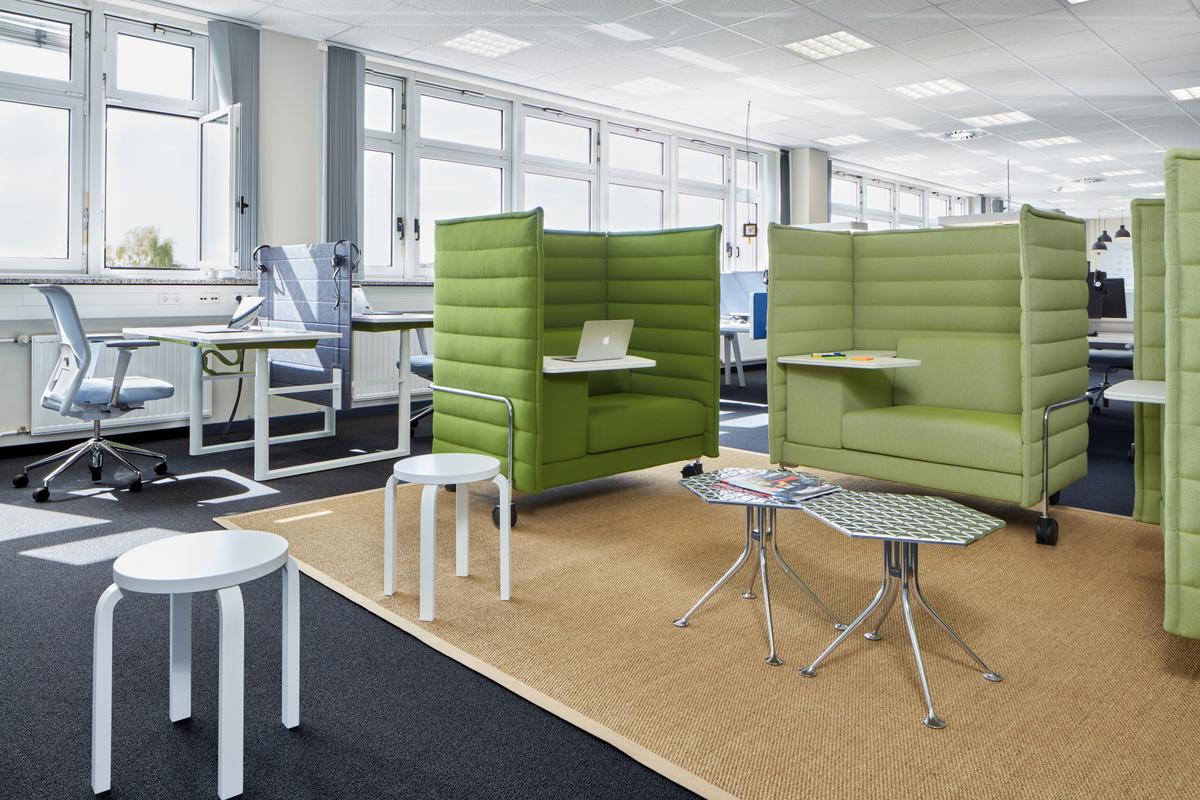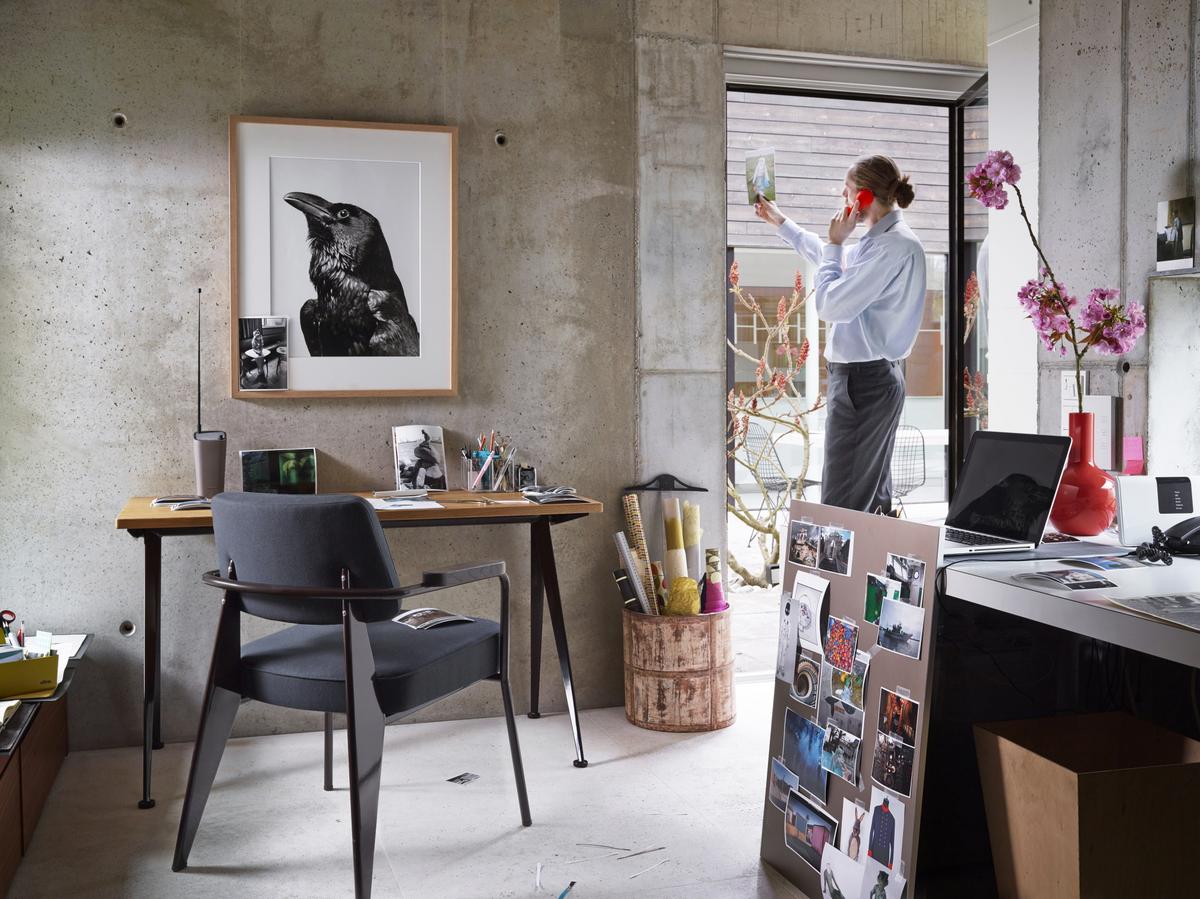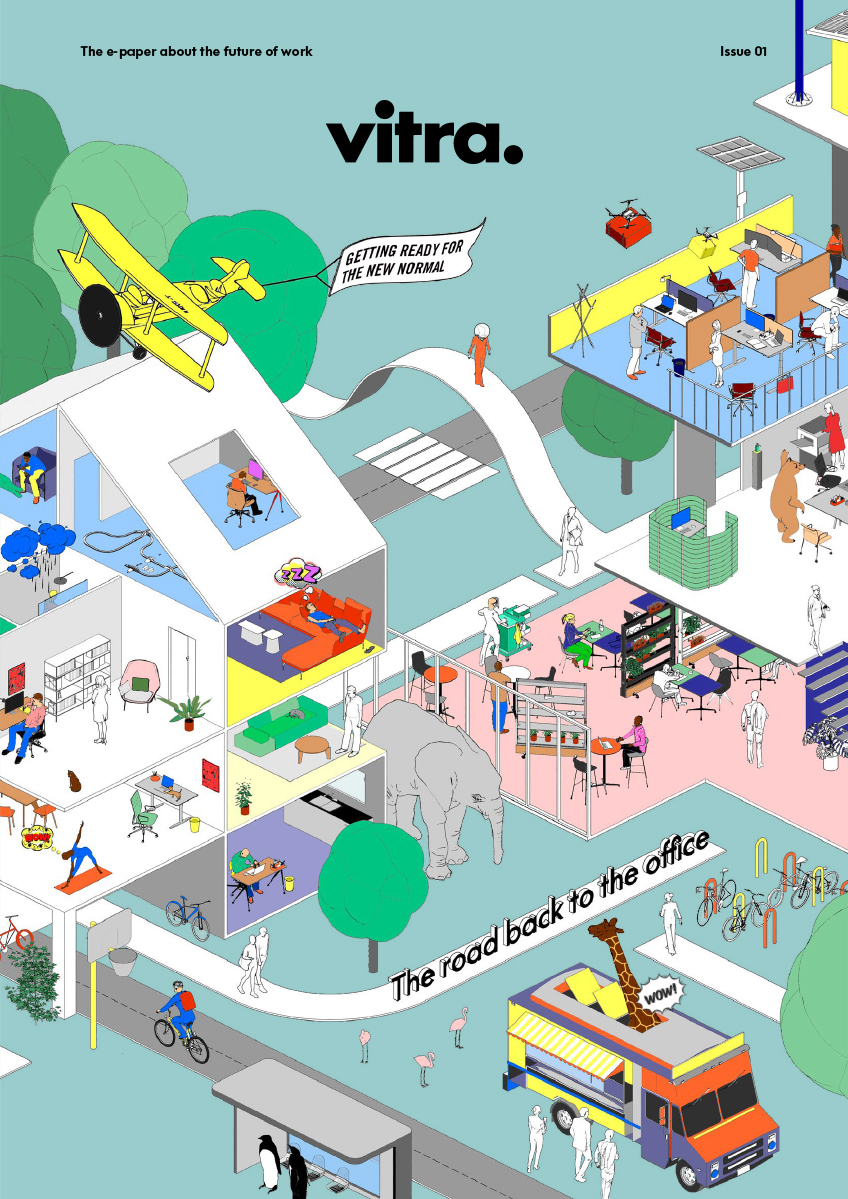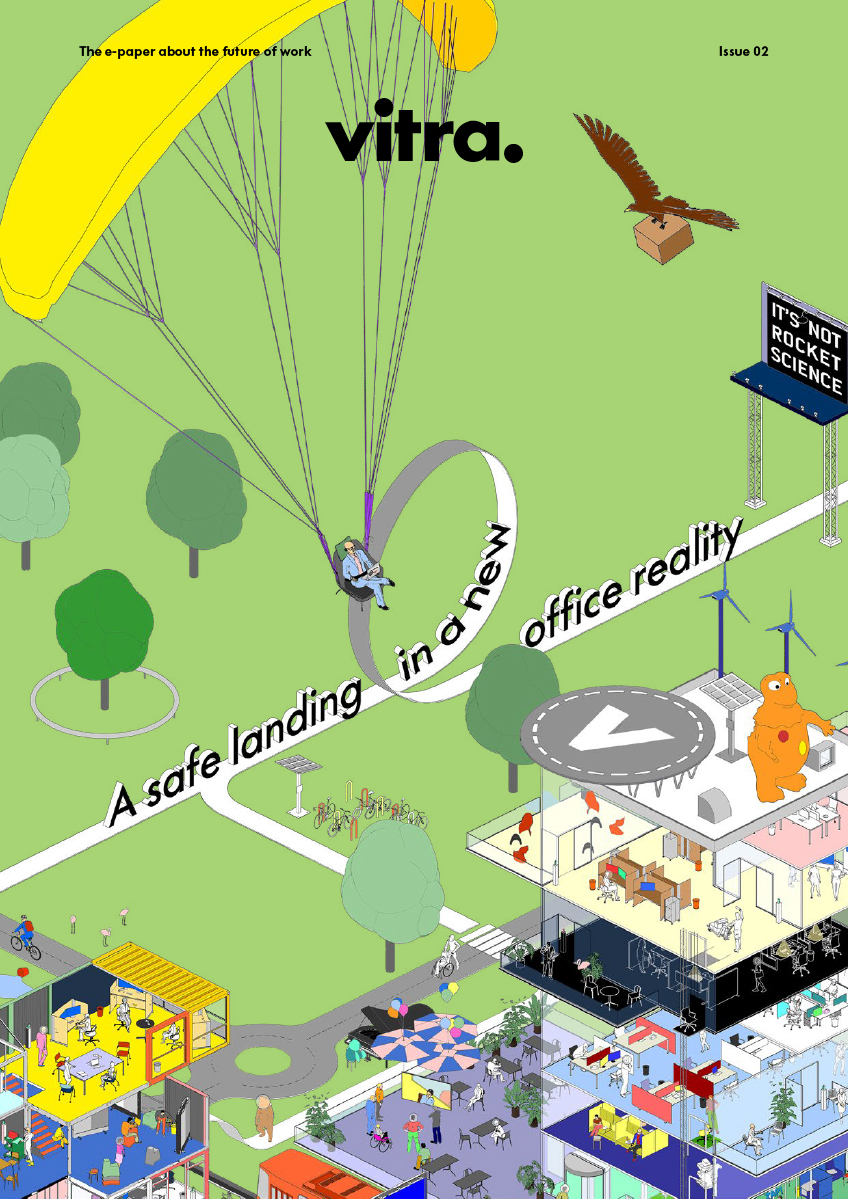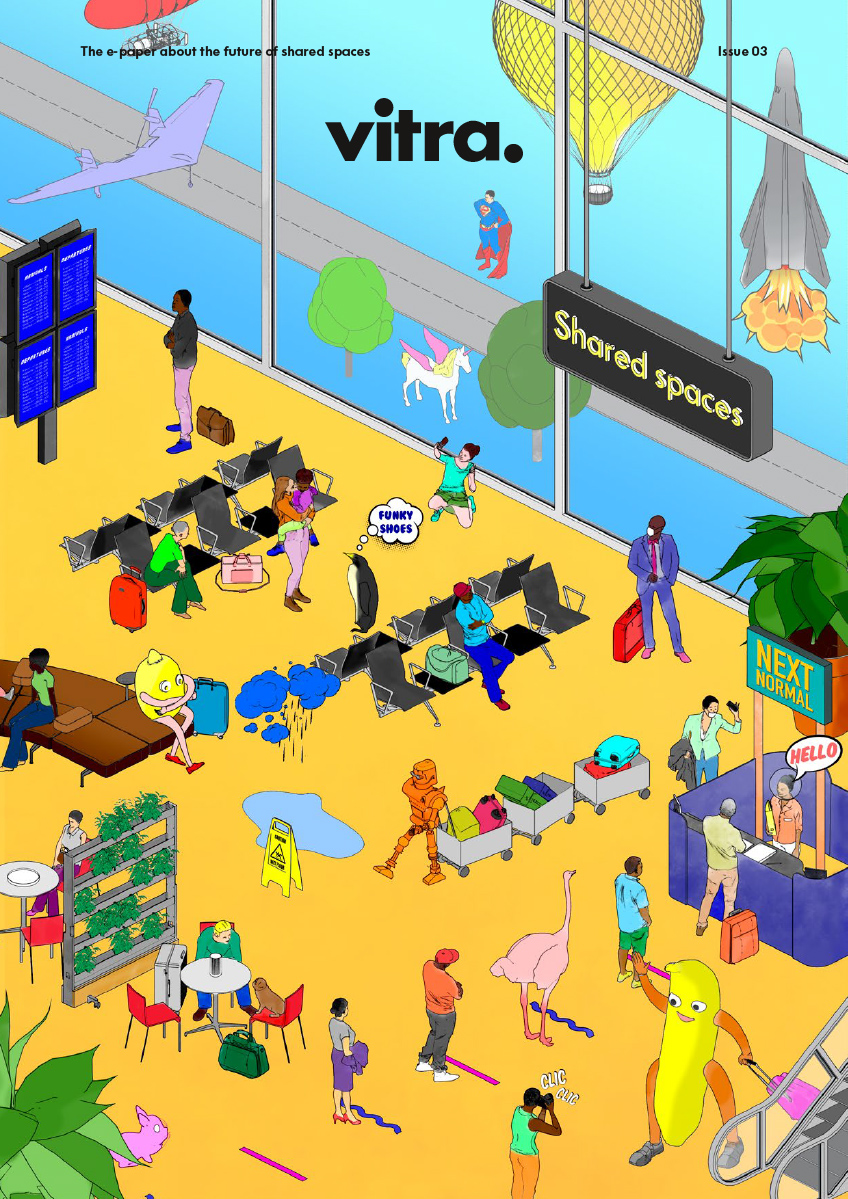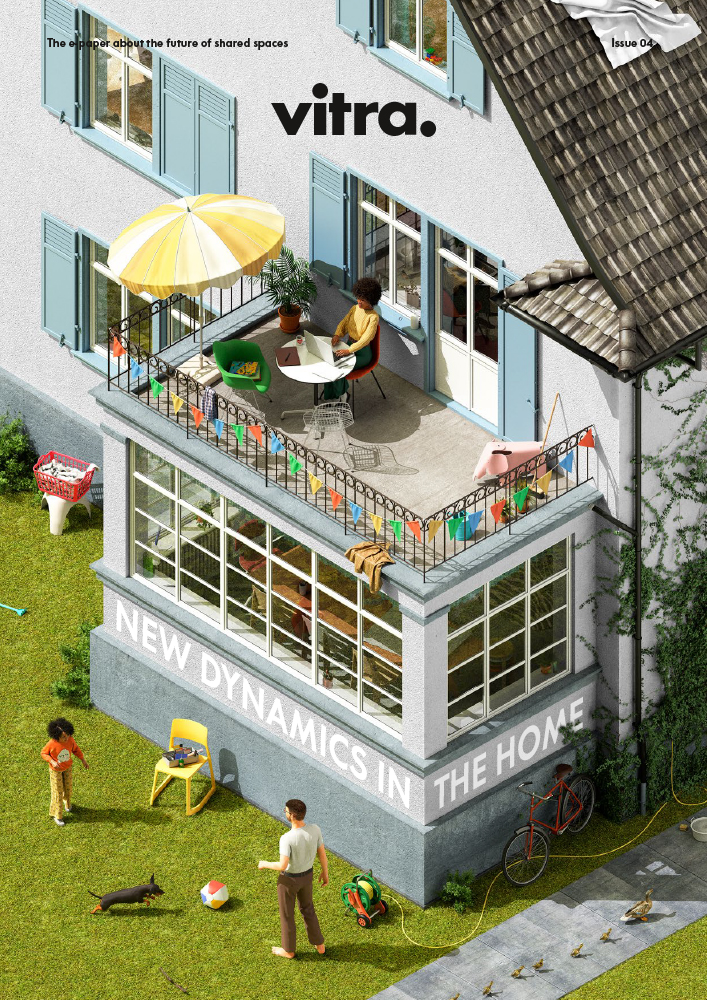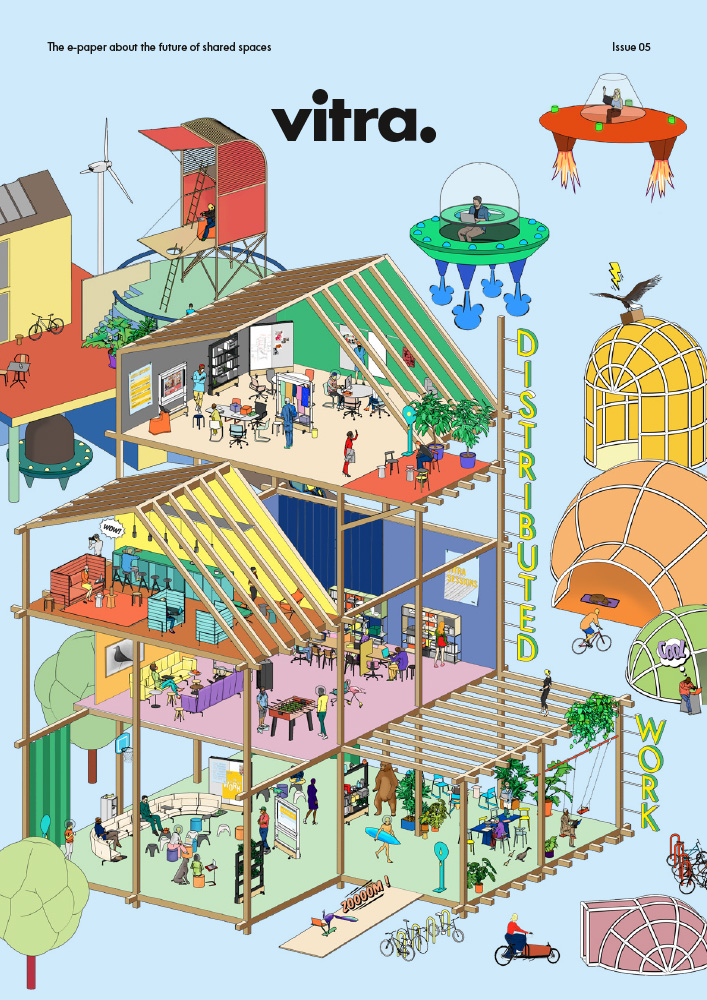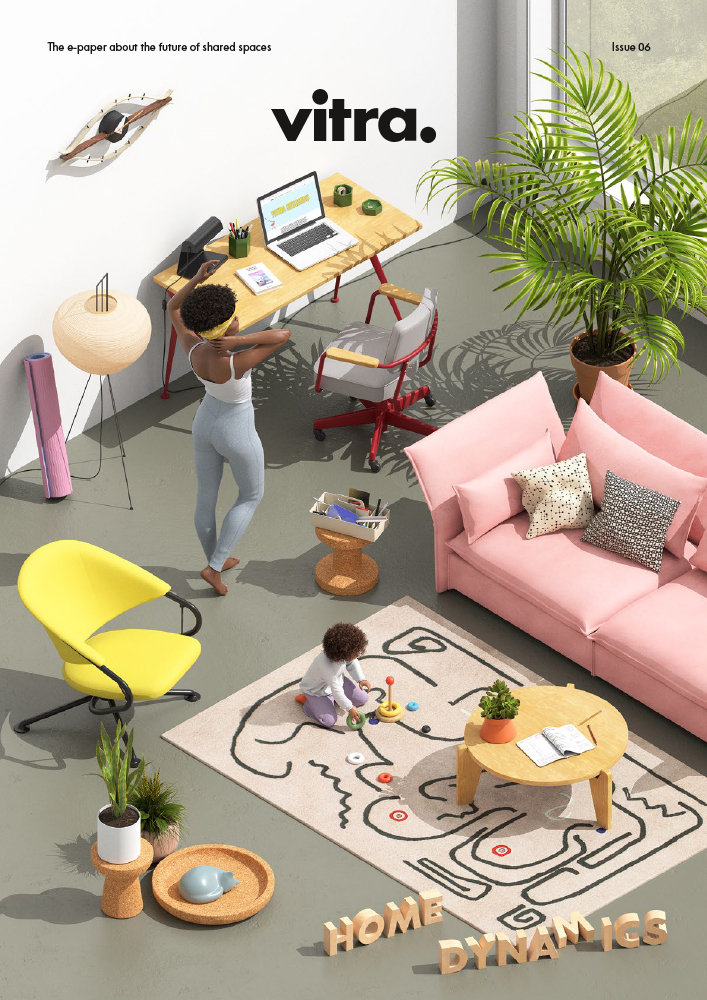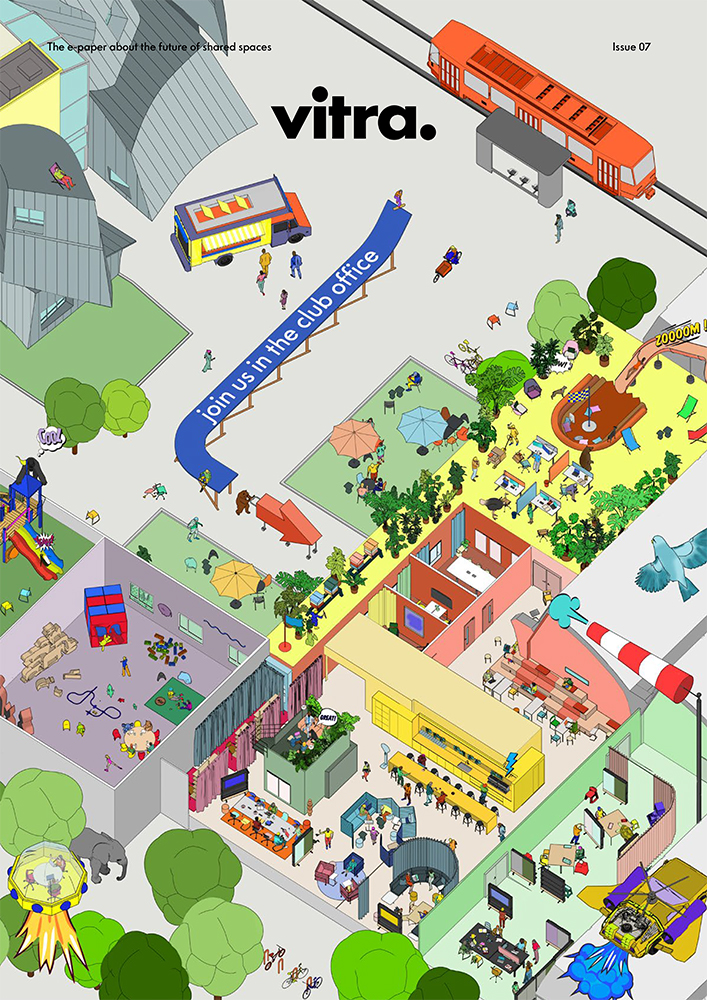The Responsible Office
Workplace design in the age of the corona pandemic
The corona pandemic has brought our world out of its familiar orbit and turned our lives upside down. From everyday life to work to future plans - all of this suddenly has to be re-examined every day and adapted to new scientific findings and political decisions. With the individual easing of restrictions not only does our social and economic life slowly return, but also more and more employees are returning to their offices. But as great as the joy of reunion with colleagues is, the uncertainty remains. Hasn't the past few weeks shown us impressively how high the risk of infection from SARS-CoV-2 is? And aren't a full open-plan office or the cramped coffee kitchen exactly the places we should continue to avoid? So how can a safe path that takes us back to work and at the same time protects us as far as possible be designed?
The solutions listed here are as individual and flexible as our working world has become in recent years. Whether open space, individual office or home office, from employees to entrepreneurs to freelancers - technical, organizational and personal protective measures are required for every work situation, and cannot be reduced to a common denominator. Yet must always conform to the prevailing legal and regulatory requirements.
Well thought through and prepared - precautions to be taken by the employer
Even if many companies are already in the starting blocks, employee safety and health remain the top priority to avoid a stop-and-go effect. Therefore, employers must plan the return of their employees carefully and, above all, step by step and implement the required infection control measures. The necessary changes should also be seen as an opportunity to make various work processes even more flexible for the future.
1. The best working conditions ... by a distance
What is valid in social spaces remains binding in everyday office life - physical distancing, at the locally defined distance. In order to be able to maintain this required physical distance from colleagues in the various office landscapes, existing concepts may have to be revised and adapted in advance. Where the nature of an activity means physical distance cannot be achieved, employers should provide mouth/nose coverings for employees as well as for customers and service providers.
2. As much contacts as necessary, as little as possible
There can be no question that it is mostly social interaction that inspires our creativity and productivity in working life. However, employees should currently have as little direct contact with one another as possible. But as much as they need. Balancing these demands creates both spatial and structural challenges, be that, for example, the division into alternating teams or the reorganization of work processes. As far as possible, the home office should continue to be favoured and the virtual meeting should be preferred to the personal one. To overcome the initial distance and facilitate the exchange, various remote tools and creative networking ideas can help to maintain the team spirit.
3. Planned by, and for, a clean hand
In order to comply with the hygiene regulations, sufficient hand washing facilities and disinfection dispensers should be provided by the employer. In addition to shorter cleaning intervals for the office and common spaces as well as contact-intensive areas (handles, door handles, copiers, etc.), equipment should only be used where possible for personal use, and where not possible cleaned after every use. Regular cleaning reports may sound petty, but they ensure transparency and traceability and are therefore essential.
All for one, one for all - the new behaviour and hygiene measures
In order to contain the pandemic sustainably, it is up to each individual to participate and to comply with the occupational safety measures - from the executive floor to the interns. After all, it's not just about protecting yourself, but also protecting others. The most important measures for protection in everyday life can also be transferred to office life:
• Those who are sick stay at home.
• Keep the legally defined minimum distance from your colleagues.
• Observe hygiene rules.
• As few direct contacts as possible.
1. Those who are sick stay at home!
This rule is and remains the top priority, even if it only seems to be an irritating cold. People with fever or respiratory symptoms who have not consulted a doctor should under no circumstances be in the public workplace and endangering others.
2. Distance means respect
Whether in the office, in the hallway, in the tea kitchen or outdoors - the safety distance of at least 1.5 meters is also to be maintained at work. Where this minimum distance is not possible, a mouth/nose covering must be worn. Hugs and shaking hands are unfortunately currently taboo. But that doesn't mean that you can't smile at each other.
3. The hygiene etiquette
Numerous advice in recent weeks have shown how to wash your hands correctly and, above all, effectively. The best thing is to internalize them again and again... and of course also apply them. Wash your hands thoroughly with soap or disinfect if necessary several times a day for at least 20 seconds, especially before and after contact with universally used devices and surfaces. If possible, everyone should only use their own office equipment. A binding cough and sneeze rule must also be observed. That is, sneeze into the crook of your arm or a handkerchief and if the latter dispose of immediately afterwards.
4. Teamwork at a distance
As we know, working in a team is not only more creative, but also more effective, especially in social exchange. But even though this is currently mostly on alternative channels, a team remains a team, even in video conferences. In addition everyone should consider whether personal meetings are really necessary or whether one or the other conversation can also be conducted via electronic communication channels. If not, the distance rule and a minimum of participants apply.
In addition, there are a lot of other tips that can be implemented individually, such as avoiding door handle contacts (e.g. not closing office doors or external toilet doors) or the way to the workplace. Instead of public transport and carpooling, switch to a bicycle where applicable is a good alternative: this not only helps protect against viruses, but also keeps you fit and healthy and protects the environment.
In context of the new realities - tips for spatial design and implementation
It is known how much the design of our workplace affects our well-being and thus our productivity and creativity. It is all the more important in the current days to find a room concept in which all employees can feel safe, healthy and valued.
1. Open plan office
So far, the bigger, more open and versatile, the better for the modern working atmosphere. From one month to the next, this model suddenly seems to have fallen out of time. Nevertheless, the open space can be temporarily transformed into a corona-conform workplace.
• Work islands: Desks and seats should be distributed in such a way that all employees sit far enough apart. If this situation does not exist, desks can also be moved or seating areas and lounges can be converted into new workplaces. With variable office furniture, open spaces can usually be transformed quickly and easily.
• Shift change: In order to equalize the density of people in the office, the employees should not only return gradually, but should also be divided into teams that alternate between work and home office on different days.
• Visibility: Distance rules can be identified with barriers or markings. New routings such as "one-way streets" through corridors and stairwells also prevent too many people from coming together.
• Partitions: With plexiglass panels, partitions or partitions, quick solutions can be found to give employees an individual space. Desks facing each other in particular should be separated by a partition.
• My one and only: Every employee should have their own desk and design it clearly. If a desk still has to be divided, it must be allocated in shifts and disinfected each time it is changed.
• Well documented: Open plan offices in particular need a longer cleaning interval as well as comprehensible cleaning protocols.
• Fresh air: Regular ventilation reduces the number of droplets in the air that may contain pathogens. And also supplies our brains with the fresh oxygen to think creatively ahead.
2. Individual offices
Even though we have continually moved on from this form over the past 50 years, it is currently making a comeback. If possible, employees should be offered individual offices. However, the hygiene rules already mentioned also apply here, especially if colleagues share an individual office on different days.
3. Meeting and lounge rooms
Large group meetings should take place in the near future using telephone or video conferencing. In order to make the conference room adequate for important meetings, the seating should be reduced and the distance rules clearly specified. The same applies to break rooms, tea kitchens or canteens.
4. Co-working space
A room where new people keep coming together may not seem like a good idea at the moment; however, there are situations which lead employers to offer their employees co-working spaces as an alternative to the home office. In such cases it is also important that not only data protection and data security regulations are follwed, but above all the specified hygiene standards are observed in all spaces.
What has so far been viewed with scepticism in many companies suddenly appears to be essential and enriching in a crisis. If a job is currently practised from the home office, this option should continue to be preferred, especially in offices with short protective distances and a high density of employees. In this way tasks can still be carried out and jobs secured, without the risk of unhealthy crowds forming; but, also one is closer to hand for children or relatives in need of care is possible. Various rules must be observed so that the home office does not become a psychological burden for employees or a security vulnerability for the company.
In addition to recording working hours, these five points on IT security should also be observed:
• Clear and binding communication of the IT security regulations to all involved
• Unauthorized persons must not have access to the work files
• Communication should only take place via trustworthy channels
• Beware of phishing emails
• Communication via VPN as standard
In the long run - Future perspectives
Everything we are currently learning about living with a virus will also play a role in the design of our workplaces in the future and will influence the further development of design and architecture.
1. Flexibility
After a short time, new habits and ways of working will develop - from new virtual communication options to inspiring workflows and decision-making processes. Flexibility has not only been an issue in recent years, it remains essential - after all, we live in turbulent times. Whether flexibility in the structures, the premises or the working hours, openness is required here on all sides.
2. Smart solutions
Whether through intuitive gestures, movements or voice control - contactless controls are not just gimmicks, they become the central function to minimize common contact points. Examples are automatic doors, contactless waste bins, ID card readers or mobile apps for ordering meals.
3. Crisis-proof design
If office furniture has become more and more multifunctional and variable in recent years, there are now additional properties that characterize the perfect work companion. In addition to the adaptable form of individual modules, which allow the quick and easy creation of separate areas and infection protection mechanisms, easy-care and antimicrobial surfaces and materials are now being added.
4. A wide field
In order to be able to work in a more individual and protected manner, floor plans will probably no longer be as open in the future and spaces will no longer flow into one another so easily. The creation of spacious areas will become less a focus of the central office space as the corridors, lobbies and outside areas.
5. A sustainable environment
Natural and sustainable materials, light-flooded rooms, plants and water elements - the design principles of biophile design create natural spaces that are not only healthier, but also increase our feel-good factor. To breathe easy in and after the crisis.
First models of success
While Italy is preparing for the beach vacation with plexiglass boxes to reclaim a few square meters of dolce vita and relaxation, the first solutions are also appearing in the office area. The American real estate consultant Cushman & Wakefield is already providing a feasible answer to the question of what the working world could look like in the post-corona period with its "6 Feet Office" office concept. The six-feet safety zone is clearly marked on the floor and combined with partitions, disposable table pads and other features to reduce the risk of infection. Developed and tested in the Netherlands, the company expects a high response to its corona concept.
Onward with optimism and confidence...
Even if the return to "normalcy" as we once knew it is not foreseeable, we can still gain more security and above all a better feeling in and around us with precautionary measures, mutual consideration and creative solutions. Yes, this involves a lot of changes, but also with improvements and opportunities on all sides for a positive future.
Individual project planning with smow
We are ready to work with you to develop and design spatial solutions and planning approaches for your individual work situations. In cooperation with our architects and interior designers, we can accompany your project from conception to implementation so that you can continue to work safely, productively and relaxed in the future. Our smow planning department can be reached from Monday to Friday between 8 am and 7 pm on +49 341 2222 88 66 or via email at projekt@smow.de.

